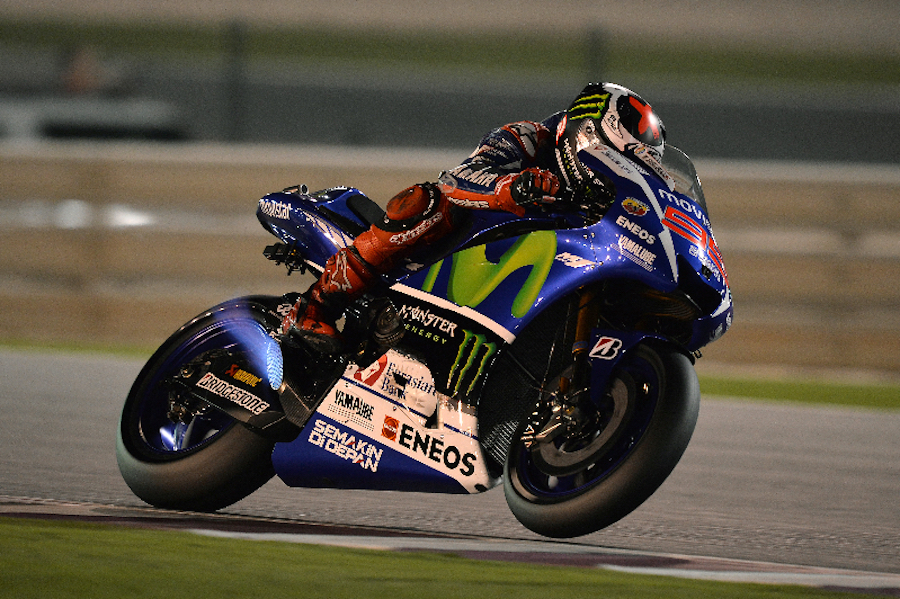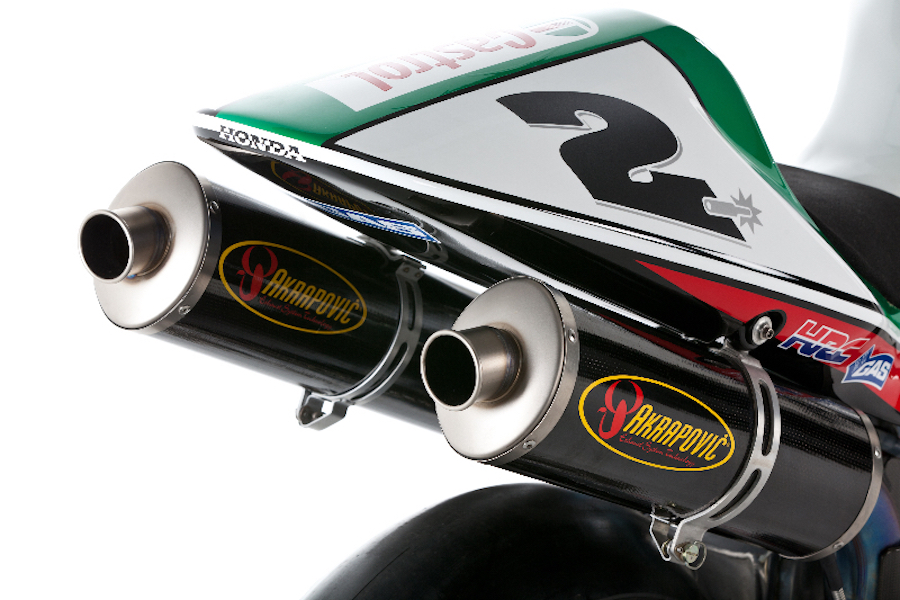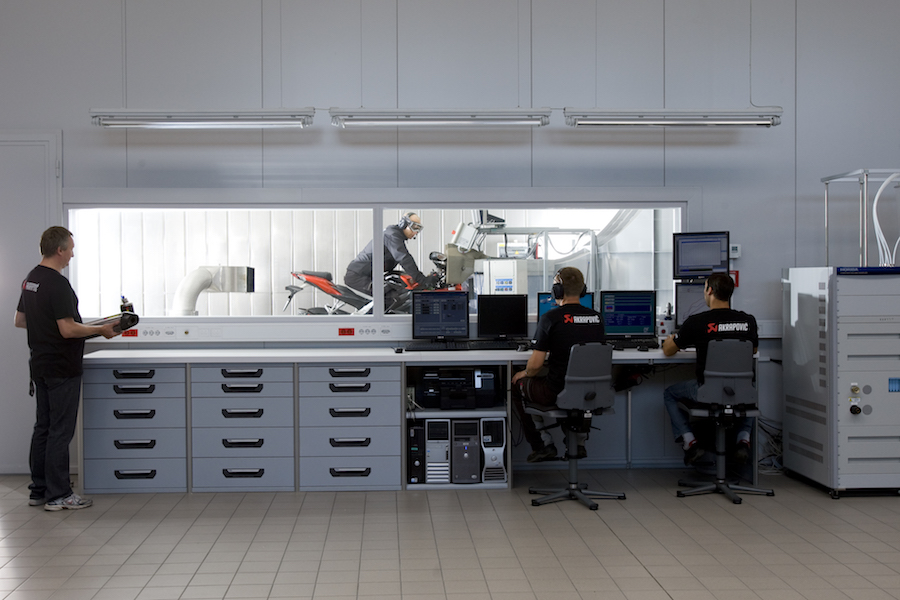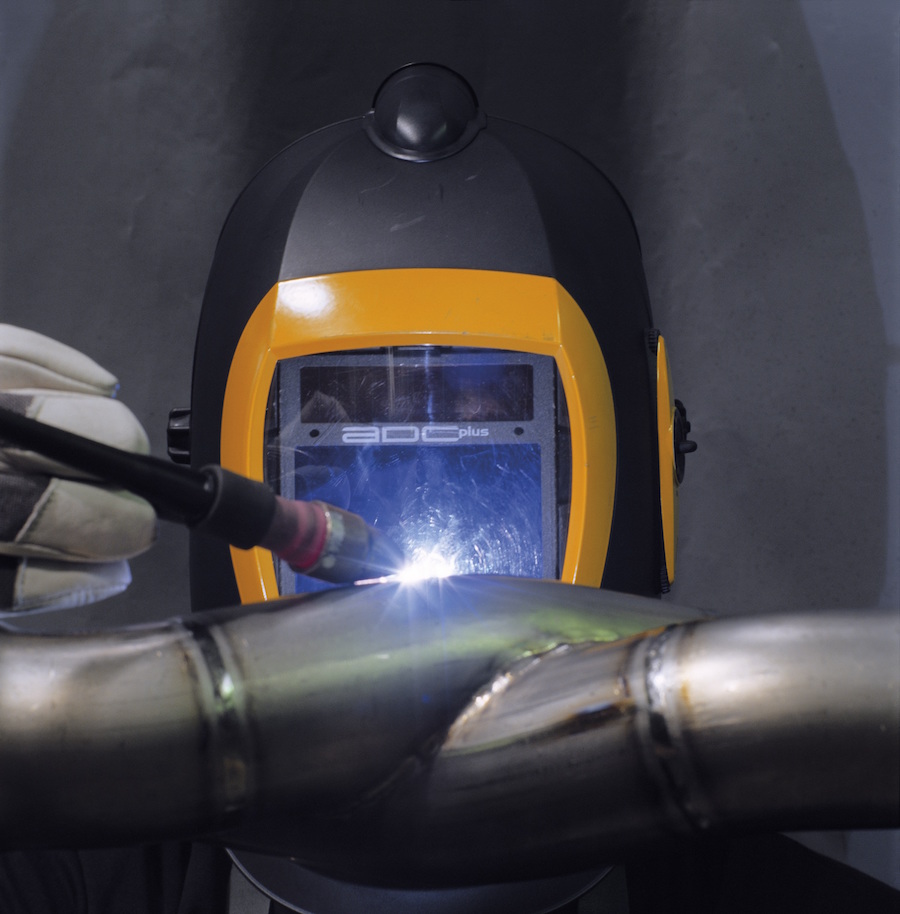Get ready for the angriest-sounding rendition of Happy Birthday yet as Akrapovič celebrates its quarter century
Today it’s one of the most renowned names in the world of motorcycling, but when the company was founded 25 years ago, Akrapovič started small. Back then it consisted of just one man – Igor Akrapovič – tuning racing engines for himself and his mates and smuggling steel tubing into his small workshop in Slovenia to craft exhaust pipes for his racebike.
“Because of the political situation with Yugoslavia I had to bring 1.2 metre lengths of steel tubes in my car from Italy as personal import,” the proud owner of the world’s most successful exhaust manufacturer recalls with a grin.
The company has come a long way since then. It now employs 890 people in its two factories, distributes products in more than 80 countries and makes a whopping €92 million (AUD $135 million) a year.
And this is the coolest bit: almost every MotoGP bike on the grid, apart from Honda, wears a sexy Akrapovič exhaust. It’s used by Rossi, as well as Iannone, Dovizioso and Viñales, to name just a few – as well as Rea, Sykes, Davies, Guintoli and our very own Josh Brookes in WSBK.

Jorge Lorenzo gave the manufacturer its 100th world title in 2015 and Toby Price – the first Aussie to win the gruelling 9200km Dakar rally – added the another feather to its cap this year.
“When I started making exhausts for myself and some racing friends back in the early nineties, I never envisaged that the company would become what it has,” says Igor, who himself is now 57 years old.
He fell in love with bikes at the age of 15, tearing up and down local roads on his brother’s Kawasaki 500 Mach III with the number plates removed. Not long after he was bitten by the racing bug.

“We usually practiced for races by riding in town – we had quite a few problems with the police, but fortunately I managed to escape them,” he chuckles.
His favourite corner was a 180º right bend leading up to the 600-year-old Ljubljana castle which dominates the skyline of his home city – and there’s an enduring image of a happy Igor bombing it down the steep hill without a helmet (see photo).
During his 10-year racing career he even made a wildcard appearance in a 250 GP in Misano against Graziano Rossi and Randy Mamola in 1979.
“In the race I had a problem with my bike, but in the practice I was faster than Mamola and I was quite proud of this.”

A lack of funds scuppered any GP ambitions, and he turned his back on his family’s plastic moulding business to become a professional engine tuner. There were just a few aftermarket exhausts available at the time (mainly Yoshimura and Termignoni) and many were crafted from iron instead of stainless steel. Having got his hands on a dyno from America, which enabled him to tune the engine and exhaust simultaneously, Igor managed to build more powerful exhaust systems than the competition.
The company’s first race win came in 1997, when Japanese factory rider Akira Yanagawa won a World Superbike race on a Kawasaki. Recognising a huge untapped market for the general public, Igor also started making titanium exhausts for Yamaha and Kawasaki roadbikes.
By 1999 every Japanese team in the Superbike series was using an Akrapovič system – with Colin Edwards clinching the company’s first world championship in 2000 aboard a Honda SP-1. The Texas Tornado was supplied with 44 different exhaust set-ups during the season, helping him find that extra few hundredths of a second advantage.
The WSBK championship win placed Akrapovič at the forefront of four-stroke development, leading to a seamless move to MotoGP in 2002 – when two-strokes were on the way out. And in 2009 Akrapovič became the only exhaust manufacturer in the world to have its own in-house titanium foundry, later supplemented by the opening of a new state of the art factory in Slovenia.

By 2012 Akrapovič was such a dominant force that it clinched all three titles in GP racing: MotoGP, Moto2 and Moto3. It was also awarded the prestigious Red Dot design award in 2014 for its titanium exhaust system for the Ducati 1199 Panigale.
Meanwhile, the inventive Slovenians won their first four-wheel world championship with an Audi R18 e-tron quattro racing car and went on to win the prestigious 24 Hour Le Mans, as well as the Dakar Rally with a Mini All4.
Akrapovič currently produces exhausts for 15 different car makers, including Audi, BMW, Aston Martin, Porsche and Mercedes – as well as partnering more than 20 motorcycle brands. Not surprisingly, it’s also involved with KTM’s MotoGP racebike debut for 2017.
It’s been a monumental success, hammered home every time Igor walks into his minimalist second-floor office overlooking the serene countryside. Parked outside the massive floor-to-ceiling glass door is a mouth-watering collection of racebikes – dominated by Lorenzo’s championship winning YZR-M1 Yamaha and Márquez’s Moto2 title-winning Suter.

Sounding off- Igor Akrapovič
What’s the best sounding bike you’ve ever heard?
Giacomo Agostini’s MV Agusta in 1976. The sound was incredible. It was a four-stroke and at that time the others were all two-strokes. When I first heard it in Dubrovnik it was mind-blowing. When it was revving at 17,000 with the open megaphones, it was a real shock. Agostini won the race.
Who’s your favourite racer?
Kenny Roberts, Giacomo Agostini and Barry Sheene were heroes from my youth. Doohan and Gardner were also incredible and Casey Stoner is the most talented. He’s now testing with Ducati – which also uses our exhaust. I also remember working closely with Rob Phillis and his Kawasaki Superbike.
How much does Rossi’s exhaust system cost?
Obviously we can’t sell the one we produce for the Yamaha factory. But apart from the obvious development costs, the system would cost around 13,000 to 20,000 Euros (AUD $19,000-$30,000).
What’s the most difficult thing about making an exhaust system?
It’s very difficult to improve the performance with homologated exhaust – obviously with racing it’s a completely different story. To get the right performance, good sound, lightness and great looks is quite challenging. With the lower emission levels and lower noise requirements, normally you need bigger mufflers and in the end it’s not what you want it to be.
If a multimillionaire asked you for a one-off exhaust for their tricked-up bike, would you do it?
We don’t do this kind of one-off thing because development costs for a single bike are between 50,000 and 100,000 Euros (AUD $73,000 – $147,000) – with 130 people working in the development team who are fully occupied. And even if we got 100,000 Euros to make a one-off exhaust, it has no value because we have to create the product for production and aftersales.
What bikes do you have in the garage?
I only have one at the moment – a Ducati Diavel – because I had a major knee operation recently, changing front, rear and side ligaments. I couldn’t ride a bike for a year. It’s a nice bike and I usually ride on the weekends and around town in summer. When I was younger I used to ride all year – even in the snow.
When did you last race?
It was in 1988 or ‘89 in Dubrovnik, Croatia, during the Alpe Adria which was a championship in this part of the world, including Italy, Germany and Austria. I raced a Suzuki GSX-R750R. In 1986 they made a special edition with a dry clutch and it was completely tuned. I usually finished first or second in the championship.
What racing injuries do you have?
I’ve had the usual broken ribs, arm, elbows and leg – but the worst injury was on snow. I always said winter sports are dangerous! Over the past 20 years I’ve had five operations on my knee.
Some manufacturers are developing synthesised sounds for their silent electric bikes. For example, the Harley-Davidson LiveWire is meant to sound like a rocket when it goes past. Is this something you’re involved in?
There are developments in this area – especially with cars and active sound systems – but you’ll never get the original sound. It’ll always be synthetic. For an audiophile it’s like an MP3 – you don’t get low frequencies with such a sound system. Electric bikes and cars have big limitations and I don’t see a motorcycle guy on an electric bike. Maybe just for fun.
What are your hobbies?
Loudspeakers and audio equipment. I used to build them in the past and now I’m tuning them. I change things like crossovers, parts capacitors, conductors and resistors and drivers in loudspeakers.

Igor Akrapovic
Story Oscar Kornyei Photography Akrapovič